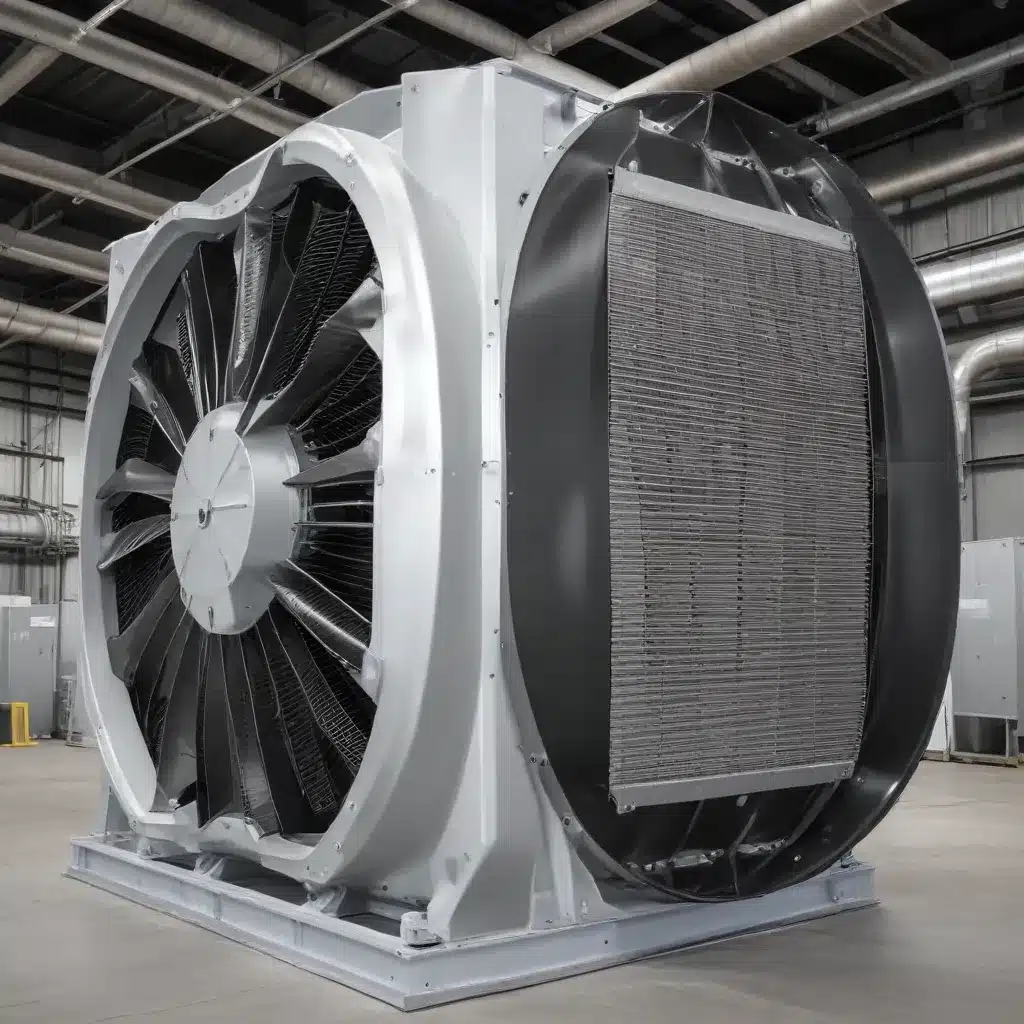
Understanding Air-Cooled Heat Exchanger Configurations
Air-cooled heat exchangers (ACHEs) are critical equipment used across a wide range of industries, from petrochemical and gas processing to oil sands operations and power generation. These heat exchangers transfer heat from hot process fluids to the surrounding air, providing cooling and condensing capabilities that are essential for many industrial processes.
The efficiency and performance of an ACHE depend heavily on the design and configuration of its fan system. Three common ACHE fan configurations include:
Forced Draft: Fans are positioned below or at the side of the heat exchanger bundle, pushing air upwards or across the tubes. This arrangement offers easier maintenance access and lower inlet air temperatures, leading to efficient cooling. However, it can be susceptible to recirculation issues.
Induced Draft: Fans are located above the heat exchanger, pulling air upwards through the tube bundle. This enhances hot air discharge and reduces recirculation risks. It provides better performance in dirty environments but makes fan and bearing maintenance more challenging.
Natural Draft: This configuration relies on natural convection without fans, with cool air entering at the bottom and hot air exiting from the top. Natural draft air movement is much slower than forced or induced draft, making it less efficient but eliminating fan-related energy costs and maintenance requirements. Natural draft coolers are suitable for large-scale installations where noise reduction is critical.
Optimizing Fan Selection and Placement
Choosing the right fan type, size, and positioning is crucial for maximizing the efficiency and reliability of an air-cooled heat exchanger. Here are some key considerations:
Fan Selection
Fan Diameter: Larger diameter fans operating at lower speeds can significantly reduce noise output without compromising performance. The use of fan rings also enhances fan efficiency and reduces tip clearance noise.
Fan Speed Control: Incorporating variable frequency drives (VFDs) allows for precise control of fan speeds, enabling the system to adjust based on real-time cooling needs. This helps minimize energy consumption and noise levels.
Fan Efficiency: Selecting high-efficiency fan motors, combined with the use of VFDs, can further optimize the energy performance of the ACHE system.
Fan Placement
The positioning of the fans in relation to the heat exchanger bundle can have a significant impact on airflow and overall efficiency. Consider the following:
Forced Draft Configuration: Placing the fans below or at the side of the tube bundle helps maintain lower air inlet temperatures, leading to more efficient cooling. However, this arrangement can be susceptible to recirculation issues, which can reduce performance.
Induced Draft Configuration: Locating the fans above the heat exchanger bundle enhances the discharge of hot air and reduces the risk of recirculation. This can provide better performance, especially in dirty environments. However, it makes fan and bearing maintenance more challenging due to access and surrounding air temperatures.
Clearance and Obstructions: Ensure sufficient clearance around the fans and heat exchanger bundle to allow for unobstructed airflow. Nearby structures, equipment, or debris can disrupt airflow patterns and diminish the ACHE’s efficiency.
Fin Design and Maintenance Considerations
The choice of fin type is also crucial for optimizing ACHE performance and durability in various operating environments:
L-Fins: These are made by wrapping a metal strip around the base tube, forming an ‘L’ shape. L-fins are typically used in moderate environments, as they can be susceptible to mechanical damage and corrosion under harsh conditions.
Embedded Fins: The fin material is wound into a helical groove cut into the outer surface of the tube, providing excellent heat transfer efficiency and mechanical bond. Embedded fins are suitable for higher process stream temperatures.
Extruded Fins: Formed by forcing both the tube and fin material through a die, extruded fins are highly resistant to atmospheric corrosion and mechanical damage, making them ideal for harsh operating environments.
Regular maintenance is essential for maintaining the long-term efficiency and reliability of air-cooled heat exchangers. Key maintenance tasks include:
- Inspecting and lubricating mechanical components like fans, bearings, and motors
- Cleaning and repairing leaks in header plugs
- Managing fouling on both the internal and external surfaces of the tubes
- Identifying and addressing common issues like corrosion and erosion
Effective cleaning methods and timely repairs are crucial for preventing more severe problems and ensuring optimal ACHE performance.
Integrating ACHE Systems into Industrial Applications
Air-cooled heat exchangers play a vital role in various critical industries, including:
Carbon Capture: ACHEs are used after compression and before transmission or storage to cool the captured carbon dioxide.
Gas Transmission: Interstage coolers employ ACHEs to cool natural gas at compressor stations, as the compression process generates significant heat.
Petrochemical: ACHEs are utilized to condense vapors and cool process streams in petrochemical operations.
Oil Sands and Refining: ACHEs are used to maintain the temperature of processed fluids and for utility (glycol, water, or steam) cooling in SAGD and refining applications.
Optimizing the design, configuration, and maintenance of air-cooled heat exchangers within these industries can have a meaningful impact on operational efficiency, energy consumption, and overall cost-effectiveness.
Partnering with Experienced ACHE Providers
For industrial businesses seeking to optimize their ACHE systems or address specific performance issues, working with a knowledgeable and experienced manufacturer and service provider is crucial.
Altex Industries is a specialized provider of air-cooled heat exchanger solutions, offering expertise in enhanced design, fabrication, maintenance, and troubleshooting. With a focus on improving efficiency and reliability, Altex Industries provides tailored solutions for a wide range of industrial applications.
To learn more about how Altex Industries can help optimize your air-cooled heat exchanger systems, visit www.aircooledheatexchangers.net.
Conclusion
Selecting the right fan configuration, size, and placement, combined with appropriate fin design and diligent maintenance, is essential for maximizing the efficiency and performance of air-cooled heat exchangers. By understanding these key factors and partnering with experienced ACHE providers, industrial operations can improve their overall cost-effectiveness, energy consumption, and reliability. Staying up-to-date on the latest ACHE optimization strategies is crucial for maintaining a competitive edge in today’s dynamic industrial landscape.

